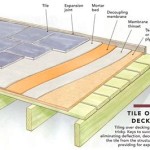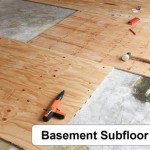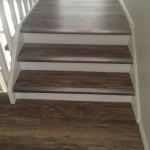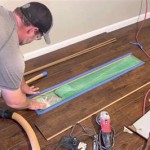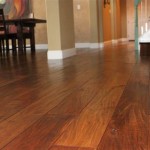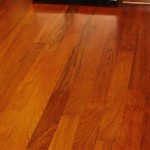Engineered Wood Flooring vs. Hardwood: Choosing the Right Option
The decision to install new flooring in a home is a significant one, often involving careful consideration of aesthetics, durability, and cost. When it comes to wood flooring, two popular choices stand out: engineered wood and hardwood. While both offer the allure of natural wood beauty, understanding their respective strengths and weaknesses is crucial for a successful decision. This article delves into the key differences between engineered wood flooring and hardwood, shedding light on their unique characteristics and potential benefits for various applications.
Construction and Structure
The fundamental difference between engineered wood and hardwood lies in their construction. Hardwood flooring consists of solid planks of wood, typically sourced from trees like oak, maple, or cherry. Engineered wood flooring, on the other hand, is a multi-layered product. Its core is composed of plywood or other wood-based materials, topped with a thin veneer of real hardwood. This layered structure provides engineered flooring with a distinct advantage in terms of stability and dimensional stability. While solid hardwood can be susceptible to warping or cupping due to fluctuations in humidity, engineered wood's construction mitigates these issues.
The veneer thickness in engineered wood flooring can vary, influencing its price and durability. Thicker veneers, while more expensive, offer more potential for refinishing. Engineered wood flooring is typically available in varying thicknesses, ranging from 3/8 inch to ½ inch. This allows for greater flexibility in installation, making it suitable for both new construction and renovation projects.
Durability and Longevity
Engineered wood flooring often boasts remarkable durability. Its layered structure, featuring multiple plies of wood, makes it resistant to warping, cupping, and expansion. While solid hardwood can experience movement and distortion due to changes in humidity, engineered wood's construction offers a more stable and predictable performance. This sturdiness makes it an ideal choice for high-traffic areas like hallways, kitchens, and living rooms.
When it comes to longevity, engineered wood flooring holds its own against solid hardwood. While both types can be refinished multiple times, engineered wood's layered structure allows for more refinishing cycles. This is due to the thicker veneer, which provides more material for sanding and resurfacing. However, it is essential to note that the number of refinishing cycles depends on the initial veneer thickness.
Installation and Cost
Engineered wood flooring often offers a simpler and quicker installation process than solid hardwood. Its click-lock system eliminates the need for glue, allowing for a faster and cleaner installation. This feature makes it a suitable option for DIY projects, as it requires less technical expertise. However, it is important to follow proper installation guidelines and ensure a level subfloor to achieve optimal results.
In terms of cost, engineered wood flooring is generally more affordable than solid hardwood. This is due to the use of lesser-quality wood in the core and the thinner veneer. Additionally, the ease of installation and availability of click-lock systems contribute to its affordability. However, higher-quality engineered wood flooring, featuring thicker veneers and exotic wood species, can approach the price of solid hardwood.
Water Resistance
Engineered wood flooring often exhibits a degree of water resistance that exceeds that of solid hardwood. This is attributed to its core construction, which includes layers of plywood or other moisture-resistant materials. These core layers act as a barrier, preventing moisture from reaching the veneer and causing damage. It is important to note that engineered wood flooring is not entirely waterproof and should not be used in continuously wet areas like bathrooms or saunas.
Solid hardwood, on the other hand, is more susceptible to water damage. Its solid wood construction allows moisture to penetrate the wood fibers, leading to warping, cupping, and even rot. While certain finishes can provide a degree of moisture protection, solid hardwood is generally not recommended for areas prone to water exposure.
Environmental Considerations
Both engineered wood and solid hardwood flooring can be sustainably sourced. Look for materials certified by organizations like the Forest Stewardship Council (FSC) to ensure the wood has been harvested responsibly. Engineered wood flooring, with its use of multiple wood layers, can potentially utilize smaller-diameter logs, minimizing waste and maximizing wood utilization.
It is essential to consider the specific wood species used, its origin, and the manufacturing processes involved in the production of both engineered wood and solid hardwood flooring. Choosing responsibly sourced materials is crucial for minimizing environmental impact and supporting sustainable forestry practices.

Engineered Wood Vs Solid Which Is Better Flooring

Engineered Wood Flooring Vs Solid Hardwood

Engineered Vs Solid Wood Floor Central

Hardwood Vs Laminate Engineered Floors What S The Difference Clean My Space

What Is The Difference Between Spc Engineered And Solid Wood Floor Planks

Solid Hardwood Vs Engineered Flooring Carpet One Floor Home

Hardwood Vs Engineered Wood Flooring Which Is Best For You Forbes Home

Blog Engineered Vs Hardwood San Marcos Tx Quality Floors More

In The Know Engineered Hardwood Flooring Vs Solid

Solid Hardwood Vs Engineered Martins Flooring
See Also
